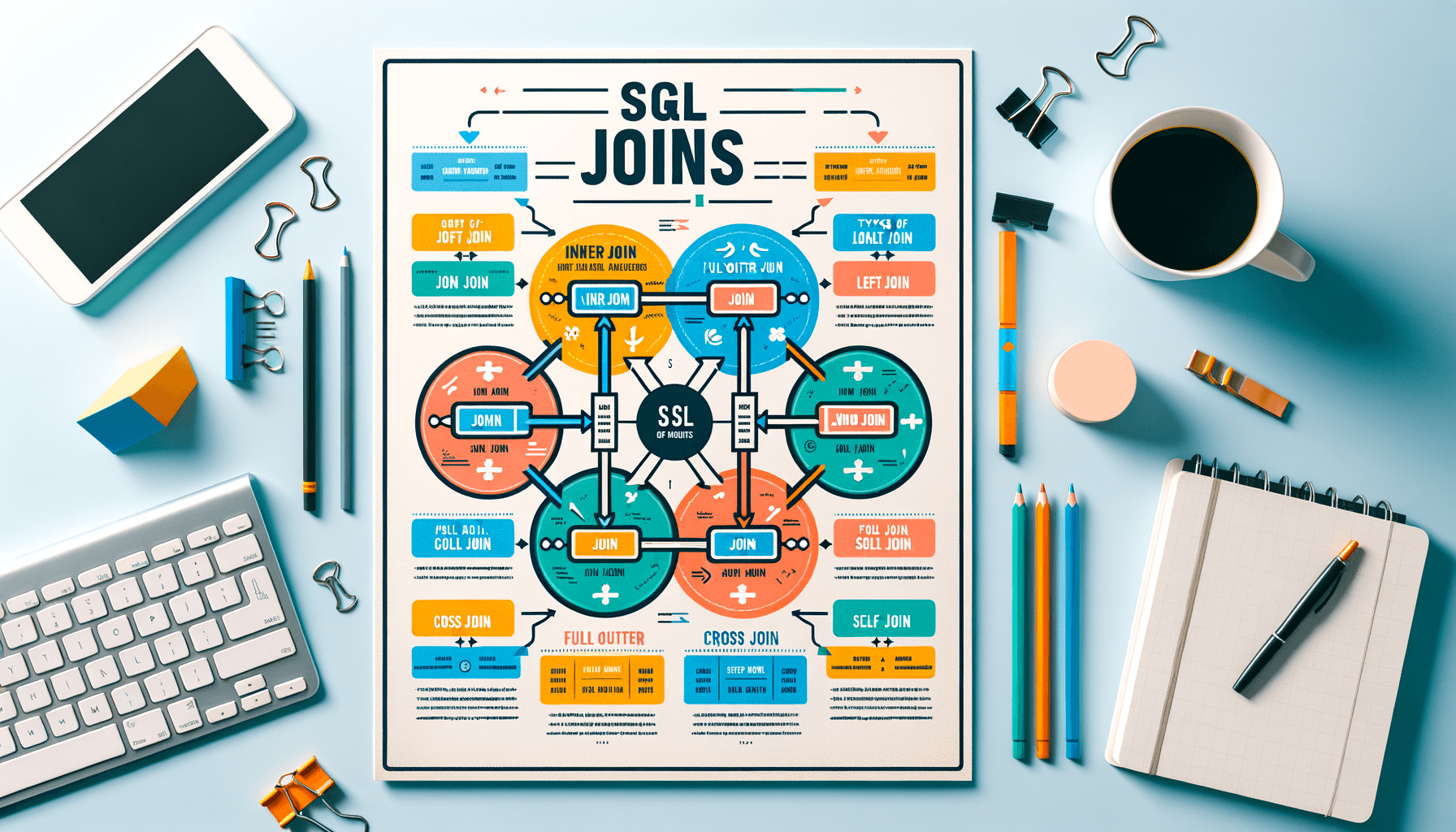A big variety of articles and resources

Unlocking the Power of Column Databases: A Comprehensive Guide
 Sia Author and Instructor
Learn SQL
Sia Author and Instructor
Learn SQL
12 minute read
Column databases are changing the way we handle data. They store data in columns rather than rows, making them great for analytical tasks. This guide will help you understand column databases, their architecture, and their benefits.
Key Takeaways
- Column databases store data in columns instead of rows, which is ideal for analytics.
- They use compression and indexing to speed up data retrieval.
- Column databases can handle large amounts of data efficiently.
- They are often used in data warehousing, business intelligence, and real-time analytics.
- Understanding the architecture and performance benefits of column databases can help in choosing the right one for your needs.
Understanding Column Databases
Definition and Key Characteristics
Column databases, also known as columnar databases, store data in columns rather than rows. This structure allows for faster data retrieval and efficient storage. Column databases excel in read-heavy operations because they can quickly access specific columns without scanning entire rows.
Historical Context and Evolution
Column databases have evolved significantly over the years. Initially designed for data warehousing, they have now expanded into various fields like business intelligence and real-time analytics. The shift from row-oriented to column-oriented storage was driven by the need for better performance and scalability.
Comparison with Row-Oriented Databases
When comparing column databases to row-oriented databases, several differences stand out:
- Storage Format: Column databases store data in columns, while row-oriented databases store data in rows.
- Performance: Column databases are optimized for read-heavy operations, whereas row-oriented databases are better for write-heavy tasks.
- Use Cases: Column databases are ideal for analytical queries, while row-oriented databases are suited for transactional queries.
Understanding these differences helps in choosing the right database system for specific needs. Column databases offer unique advantages in terms of speed and efficiency, especially for analytical tasks.
Architectural Foundations of Column Databases
Columnar Storage Mechanisms
Column databases store data by columns rather than rows. This structure allows for more efficient data retrieval, especially for analytical queries. Columnar storage optimizes read performance by accessing only the necessary columns, reducing I/O operations.
Data Compression Techniques
Data compression is a key feature in column databases. By compressing data, these databases save storage space and improve query performance. Common techniques include run-length encoding and dictionary encoding. Compression reduces the amount of data that needs to be read from disk, speeding up query execution.
Indexing and Query Optimization
Indexing in column databases is designed to enhance query performance. Unlike traditional row-based databases, column databases use bitmap indexes and other advanced indexing methods. These techniques help in quickly locating the required data, making query execution faster and more efficient.
Understanding the architectural foundations of column databases is crucial for leveraging their full potential in data analytics and storage efficiency.
Performance Benefits of Column Databases
Query Performance and Speed
Column databases excel in query performance and speed. By storing data in columns rather than rows, they allow for faster data retrieval. This is particularly beneficial for analytical queries that require scanning large datasets. Columnar storage reduces the amount of data read from disk, leading to quicker query execution times.
Efficient Data Retrieval
Efficient data retrieval is another significant advantage of column databases. Since only the relevant columns are read during a query, the system avoids unnecessary data processing. This selective access to data not only speeds up queries but also reduces the load on the system, making it more efficient.
Scalability and Load Handling
Column databases are designed to handle large volumes of data, making them highly scalable. They can efficiently manage increasing loads without a significant drop in performance. This scalability is crucial for businesses that deal with growing datasets and need a database system that can keep up with their expanding data needs.
In summary, column databases offer remarkable performance benefits, including faster query execution, efficient data retrieval, and excellent scalability. These features make them an ideal choice for businesses looking to enhance their data processing capabilities.
Use Cases and Applications
Data Warehousing
Column databases are particularly well-suited for data warehousing. They allow for efficient storage and retrieval of large volumes of data. This makes them ideal for businesses that need to analyze historical data to make informed decisions. With columnar storage, data can be compressed more effectively, reducing storage costs and improving query performance.
Business Intelligence
In the realm of business intelligence, column databases shine by enabling fast and efficient data analysis. They support complex queries and aggregations, which are essential for generating insights from large datasets. Businesses can leverage these capabilities to gain a competitive edge by making data-driven decisions.
Real-Time Analytics
Column databases are also excellent for real-time analytics. They can handle high-velocity data streams and provide quick query responses. This is crucial for applications that require immediate insights, such as fraud detection, online recommendation systems, and monitoring of IoT devices.
Column databases offer a versatile solution for various data-intensive applications, making them a valuable asset in today's data-driven world.
Column Database Management Systems
Popular Column Database Systems
When it comes to column databases, several systems stand out. Some of the most popular ones include Apache Cassandra, Amazon Redshift, and Google BigQuery. Each of these systems offers unique features tailored to different needs. For instance, Amazon Redshift is known for its scalability and integration with other AWS services, making it a top choice for large-scale data warehousing.
Open Source vs. Commercial Solutions
Choosing between open source and commercial column databases depends on your specific requirements. Open source options like Apache HBase and ClickHouse provide flexibility and cost savings. On the other hand, commercial solutions such as Snowflake offer robust support and advanced features. It's essential to weigh the benefits and limitations of each to make an informed decision.
Integration with Existing Systems
Integrating column databases with your existing systems can be seamless or challenging, depending on the tools and technologies you use. Many column databases support standard SQL queries, making it easier to integrate with traditional relational databases. Additionally, data migration tools and ETL processes can facilitate smooth integration, ensuring that your data flows efficiently between systems.
Understanding the strengths and weaknesses of different column database systems is crucial for optimizing your data management strategy.
Data Modeling in Column Databases
Schema Design Principles
When designing schemas for column databases, it's crucial to focus on how data will be queried. Unlike row-oriented databases, column databases store data by columns, which can significantly speed up read operations. Understanding the access patterns is key to optimizing schema design.
Normalization vs. Denormalization
In column databases, denormalization is often preferred. This is because it reduces the need for complex joins, which can be costly in terms of performance. However, normalization can still be useful for reducing data redundancy and improving data integrity.
Handling Complex Data Types
Column databases are well-suited for handling complex data types like JSON and XML. They can store these types efficiently and allow for fast querying. This makes them ideal for applications that require flexible data models.
In column databases, the way you model your data can have a significant impact on performance and scalability. It's essential to carefully consider your schema design, normalization strategy, and how you handle complex data types to get the most out of your database system.
Querying Column Databases
SQL and NoSQL Queries
When working with column databases, you can use both SQL and NoSQL queries. SQL is great for structured data and complex queries, while NoSQL is more flexible for unstructured data. Choosing the right query type depends on your data and what you need to do with it.
Optimization Techniques
To get the best performance from your column database, you need to use optimization techniques. This includes indexing, partitioning, and using the right data types. These methods help speed up your queries and make your database more efficient.
Handling Large Datasets
Column databases are designed to handle large datasets. They store data in columns, which makes it easier to read and analyze big data. This is especially useful for real-time analytics and business intelligence applications.
Column databases are powerful tools for managing and querying large amounts of data efficiently.
Security and Compliance
Data Encryption Methods
In column databases, data encryption is crucial for protecting sensitive information. Encrypting data ensures that even if unauthorized access occurs, the data remains unreadable. Common encryption methods include AES (Advanced Encryption Standard) and RSA (Rivest-Shamir-Adleman). These methods are widely used due to their robustness and efficiency.
Access Control Mechanisms
Access control is another vital aspect of security in column databases. Role-Based Access Control (RBAC) is a popular method where users are assigned roles with specific permissions. This approach helps in restricting access to sensitive data and ensures that only authorized personnel can perform certain actions.
Regulatory Compliance
Adhering to regulatory standards like GDPR (General Data Protection Regulation) and HIPAA (Health Insurance Portability and Accountability Act) is essential for organizations handling personal data. Compliance not only helps in avoiding legal penalties but also builds trust with users by ensuring data integrity and privacy.
Ensuring security and compliance in column databases is not just about protecting data but also about maintaining trust and adhering to legal standards.
Challenges and Limitations
Data Loading and ETL Processes
One of the main challenges with column databases is the complexity of data loading and ETL (Extract, Transform, Load) processes. These tasks can be time-consuming and require specialized tools to ensure data is correctly formatted and optimized for columnar storage. Efficient ETL processes are crucial for maintaining performance and data integrity.
Cost Considerations
Column databases can be expensive to implement and maintain. The costs include not only the software licenses but also the hardware and skilled personnel needed to manage the system. It's important to weigh these costs against the performance benefits to determine if a column database is the right choice for your organization.
Compatibility Issues
Integrating column databases with existing systems can pose compatibility challenges. Many legacy systems are designed for row-oriented databases, and transitioning to a columnar format may require significant changes to the existing infrastructure. This can lead to downtime and additional costs during the migration process.
While column databases offer numerous advantages, it's essential to carefully consider these challenges and limitations to ensure a successful implementation.
Future Trends in Column Databases
Advancements in Technology
Column databases are evolving rapidly with new technologies. One major trend is the integration with cloud services, which offers scalability and flexibility. Advancements in AI are also playing a significant role, enabling more efficient data processing and analytics.
Emerging Use Cases
As businesses seek more real-time analytics, column databases are becoming essential. They are particularly useful in business intelligence and real-time data processing. This shift is driven by the need for faster and more accurate data insights.
Predictions for Market Growth
The market for column databases is expected to grow significantly. This growth is fueled by the increasing demand for efficient data management solutions. While transitioning to column databases can be costly and complex, their benefits for real-time analytics and business intelligence make them a valuable asset for modern data management.
The future of column databases looks promising, with continuous advancements and new applications emerging regularly.
Case Studies and Industry Examples
Successful Implementations
Column databases have been successfully implemented across various industries. For instance, a major retail company used a column database to optimize their inventory management. This led to a 30% reduction in stockouts and improved customer satisfaction.
Lessons Learned
From these implementations, several lessons have emerged. One key takeaway is the importance of data modeling. Proper schema design can significantly enhance performance and scalability.
Best Practices
To ensure success, follow these best practices:
- Understand your data: Know the types of queries you will run.
- Optimize schema design: Use denormalization where appropriate.
- Leverage compression: This can save storage and improve query speed.
Implementing column databases can transform data management, but it requires careful planning and execution.
Explore our case studies and industry examples to see how our courses have helped others succeed. From SQL to AI, our students have achieved amazing results. Ready to join them? Visit our website to learn more and start your journey today!
Conclusion
In conclusion, column databases offer a powerful way to manage and analyze large datasets efficiently. By storing data in columns rather than rows, these databases can significantly speed up query performance and reduce storage costs. This makes them an excellent choice for applications that require fast data retrieval and complex analytical queries. As technology continues to evolve, the importance of understanding and utilizing column databases will only grow. Whether you're a database administrator, a data scientist, or a developer, mastering column databases can provide you with the tools you need to handle the data challenges of tomorrow. So, dive in, explore the capabilities of column databases, and unlock their full potential for your data-driven projects.
Frequently Asked Questions
What is a column database?
A column database stores data in columns instead of rows, making it faster for reading and analyzing large amounts of data.
How is a column database different from a row-oriented database?
In a row-oriented database, data is stored in rows, which is better for transactional operations. Column databases store data in columns, making them better for read-heavy operations.
What are the benefits of using a column database?
Column databases offer faster query performance, efficient data retrieval, and better scalability for large datasets.
What are some common use cases for column databases?
Column databases are often used in data warehousing, business intelligence, and real-time analytics.
Are there any popular column database systems?
Yes, some popular column database systems include Apache Cassandra, HBase, and Amazon Redshift.
Can column databases handle complex data types?
Yes, column databases can handle complex data types, but it may require careful schema design and optimization.
What challenges might I face when using a column database?
Challenges include data loading and ETL processes, cost considerations, and compatibility issues with existing systems.
What is the future of column databases?
The future of column databases looks promising with advancements in technology, emerging use cases, and predicted market growth.
Related Articles

Mastering Data Management: The Ultimate SQL Training Guide
14 minute read

Mastering SQL Joins: A Comprehensive Guide for Beginners
15 minute read

Uncover The Secrets To Mastering Job Interviews
3 minute read




